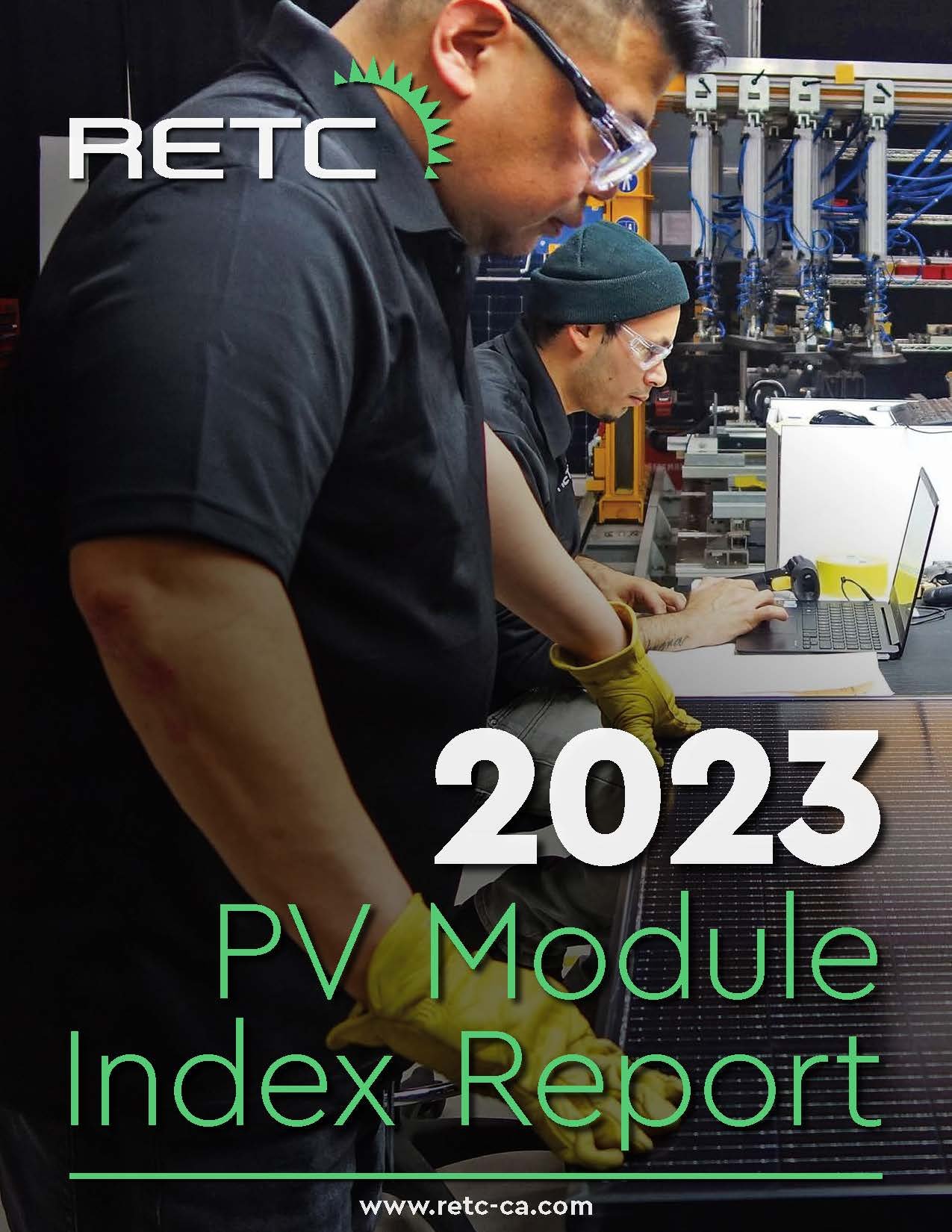PVMI Q&A: VDE’s Brian Grenko on Perovskite
BRIAN GRENKO, VDE AMERICAS
Brian Grenko is the vice president and head of technical advisory services for the engineering firm VDE Americas. As part of our 2023 PV Module Index Report (PVMI) research, RETC conducted a subject matter expert interview with Grenko to get his perspective on next-generation PV technologies. Here, we share highlights from this behind-the-scenes PVMI interview, exploring market drivers, technology roadmaps, and technical due diligence for perovskite-based PV modules.
RETC: What market factors do you see driving investment in perovskite-based PV technologies?
BG: I’m paying particular attention to the impact of the IRA [Inflation Reduction Act], passed by the U.S. federal government in 2022. This is nominally a 10-year program that, among other things, offers solar manufacturing incentives and includes incentive adders for domestic content. While the IRA is important legislation that will spur economic development, building a U.S.-based polysilicon plant is also prohibitively expensive. It may not be optimal to move this upstream segment of the crystalline-silicon PV module supply chain to the United States, in part because this is an energy-intensive endeavor and U.S. energy costs are relatively high. Since the upstream barrier to entry is high for conventional silicon-based PV cell technologies, the domestic content adder may create a market opportunity for novel solar module technologies, including but not limited to perovskite-based PV. It’s not an easy path to market because a number of investors may remember what happened to the thin-film market from 2004 to 2014. However, perovskites have disruptive market potential.
RETC: Why would a module company want to decouple solar manufacturing from existing supply chains?
BG: Part of what makes thin film products such as perovskites compelling is the streamlined supply chain. Consider all the steps required to make conventional crystalline silicon PV modules. We process silica at high temperatures to refine it into polysilicon, which is very energy intensive. We typically ship polysilicon over long distances to another manufacturing location where we remelt it in another high-temperature operation to form ingots, which are later sliced into wafers. Those wafers may be shipped to yet another facility for conversion into solar cells prior to PV module assembly. Now imagine a perovskite-based PV module manufacturing process where raw materials enter one end of the factory and finished products exit the other. Roll-to-roll manufacturing would be revolutionary from a cost-per-watt standpoint—and it is not the only path to market for perovskites. Manufacturers are also working on innovative ways to deposit perovskites on silicon.
RETC: What are the benefits of combining perovskites with conventional cell technologies?
The industry is reaching the point where it needs to start looking to tandem cells to get to the next level of efficiency. Today, many module companies are moving from PERC [passivated emitter and rear contact] to TOPCon [tunnel oxide passivated contact] cell technologies to improve efficiencies. With manufacturers nearing efficiency limits for conventional single-junction crystalline-silicon PV cells, tandem silicon-plus-perovskite cells are one way the industry can extend its existing technology roadmap. A common approach to a tandem technology is to deposit a perovskite top layer over a silicon bottom layer. A benefit to this approach is that it is largely a modified version of existing manufacturing processes. Other companies have proposed coating perovskites on glass, which is then packaged into a crystalline silicon module as a separate device; in this scenario, the perovskite device is voltage-matched to the silicon device so that the two circuits can be combined in one junction box. Some of these outside-the-box approaches are very creative.
RETC: How can manufacturers mitigate reliability and performance risks associated with novel cell technologies?
BG: First and foremost, manufacturers need to get iterations of products out in the field. In the case of perovskites, banks are going to be most concerned about long-term in-field performance. The technology effectively has a strike against it because the meta-stability of the crystalline structure itself has been widely criticized. Field data are the only way to overcome this perception issue. In addition to getting products out in the field, manufacturers need to engage an independent third party, like VDE Americas, to help evaluate and validate product reliability and in-field performance. As an owner’s engineer, we understand the types of concerns that the investment community has regarding novel technologies. Because we know what questions manufacturers typically face, we can help facilitate product development, testing, and market entry.
RETC: How does beyond-qualification testing in a laboratory setting complement field testing?
BG: Until recently, design qualification standards for PV modules, such as IEC 61215, did not include much about outdoor testing. This is a problem because adopting new cell technologies may result in new degradation mechanisms. PERC modules, for example, turned out to experience LETID [light- and elevated temperature–induced degradation], a degradation mechanism that was not detected by conventional certification tests. Beyond-qualification testing addresses this gap with extended test sequences that recreate known degradation mechanisms and failure modes. A common misconception, especially with new manufacturers, is the belief that conventional certification testing is adequate to identify novel degradation mechanisms in new technologies. That simply is not true. While it may prove impossible to identify all unknown failure mechanisms, manufacturers should expect that new technologies will perform differently than existing ones. Manufacturers can start to foolproof their product designs by incorporating this thinking into the design qualification process as early as possible. To the extent that manufacturers can use beyond-qualification tests to identify novel degradation mechanisms, they can improve the field performance of new product designs, especially those based on novel cell technologies.
Excerpts from this interview with Brian Grenko originally appeared in “Perovskite-Based PV Technologies,” an industry trends article featured in the 2023 PV Module Index Report.





